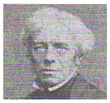
Michael Faraday
|
|
|
|
|
|
|
|
|
|
|
|
|
|
|
|
|
|
Michael Faraday (1791-1867)
 |
Michael Faraday |
So, who was Michael Faraday?
Michael Faraday was born on 22nd September 1791 at Newington, Surrey, England. His father was a blacksmith. As a dissenter, Michael had a limited formal education and did not go to university. At the age of 14, he became apprenticed to a bookbinder in London and soon became absorbed in reading books concerned with science and began experimenting with electricity.
How did he enter the world of science?
In 1812, Michael went to some lectures given by Sir Humphry Davy. Inspired by these, he contacted Davy and sent the notes he had taken during the lectures, together with a request for a job. Davy must have been impressed, as he appointed Michael Faraday to be a laboratory assistant at the Royal Institution on March 1st 1813. He even chose Faraday to accompany him on a tour of Europe shortly after the appointment. This gave Michael Faraday the opportunity to meet other scientists and find out about their research.
What sort of work did Faraday do?
His first work was in chemistry, where he made new compounds and in 1822 made the first steel alloy. In 1823, he was the first to liquefy a gas, chlorine and in 1825 he discovered what is known as benzene.
Faraday's greatest achievements are with electricity and magnetism. He was able to make an electric motor in 1821, soon after Oersted had discovered electromagnetism.
After further experiments, in 1831, he discovered electromagnetic induction, the basis of electric power generation.
Also around this period Michael Faraday was working on electrolysis and his studies lead on to the science of electrochemistry.
In 1841, Faraday became mentally ill and was forced to rest for three years. He then went on to make important experiments in magnetism, which he explained in terms of lines of force, which is now known as electromagnetic theory.
What happened next?
Michael Faraday left the Royal Institution in 1865, after connections spanning more than fifty years. He died at Hampton Court, London, England on 25th August 1867.